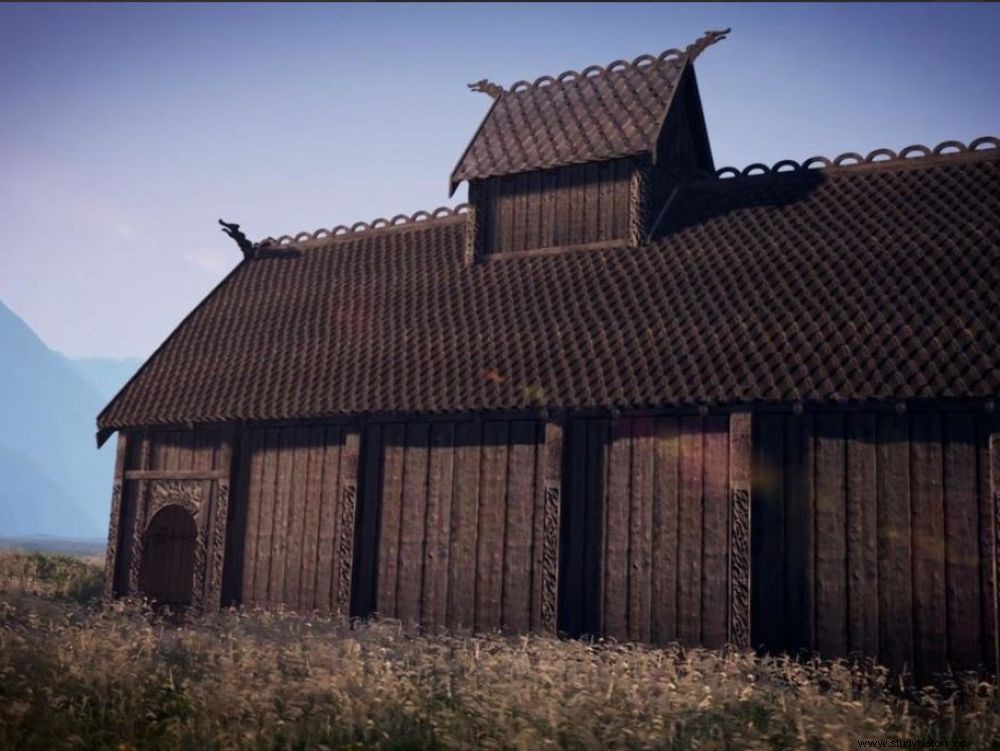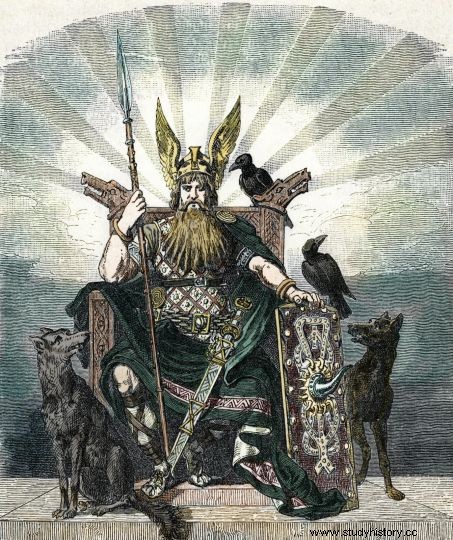Devoted to Viking deities, a rare 1,200-year-old pagan shrine has been unearthed in western Norway.

3D digital reconstruction of the pagan sanctuary of Orsta, Norway. Built 1200 years ago, it would have been made on the basis of Christian buildings seen by the Vikings during their migrations.
The Anglo-Saxons are a bit like our national Monsieur Jourdain:without writing verse, they evoke the names of Viking gods by listing the days of the week... Friday is thus the day of Fryer or Frigg (Fryer-day) , Thursday that of Thor (Thor-day) and Wednesday that of Odin (Wōdnesdæg)… These deities of the Scandinavian pagan pantheon are those who were undoubtedly venerated in a Viking "temple" (8th-11th century) recently discovered in Norway. The foundations of a pre-Christian sanctuary were indeed cleared in September 2020 in Ose, in the municipality of Orsta, on the west coast of Norway. It is said to be the oldest known structure of its type identified in this country.
Sacrifices to Thor and Odin
Scientists estimate that the building, 14 meters long, 8 meters wide and probably around ten meters high, was "used to worship and offer sacrifices to deities such as Thor and Odin during the solstices of summer and winter ", according to the words of Soren Diinhoff, archaeologist at the University of Bergen and leader of the project, who spoke in the scientific information site Live Science . Very few buildings of this type have been found so far in Denmark and Sweden and specialists know little about the cults that were practiced there.
The Anglo-Saxons are a bit like our national Monsieur Jourdain:without writing verse, they evoke the names of Viking gods by listing the days of the week... Friday is thus the day of Fryer or Frigg (Fryer-day) , Thursday that of Thor (Thor-day) and Wednesday that of Odin (Wōdnesdæg)… These deities of the Scandinavian pagan pantheon are those who were undoubtedly venerated in a Viking "temple" (8th-11th century) recently discovered in Norway. The foundations of a pre-Christian sanctuary were indeed cleared in September 2020 in Ose, in the municipality of Orsta, on the west coast of Norway. It is said to be the oldest known structure of its type identified in this country.
Sacrifices to Thor and Odin
Scientists estimate that the building, 14 meters long, 8 meters wide and probably around ten meters high, was "used to worship and offer sacrifices to deities such as Thor and Odin during the solstices of summer and winter ", according to the words of Soren Diinhoff, archaeologist at the University of Bergen and leader of the project, who spoke in the scientific information site Live Science . Very few buildings of this type have been found so far in Denmark and Sweden and specialists know little about the cults that were practiced there.

3D projections of the Orsta Shrine from the postholes of its structure. Credits:University Museum of Bergen
"In Norway, the gods Thor, god of war, or Freyr, divinity of fertility, were the most honored , explains Alban Gautier, professor of medieval history, at the Center Michel de Bouärd (Craham-UMR 6273), at the University of Caen-Normandy, joined by Sciences et Avenir . And if the Norse gods were numerous, we only know a tiny part of them" . No contemporary text from the 8th-10th centuries actually mentions it.
The völva vikings were a kind of pythia whose existence is attested
We have to wait for the 13th century and the publication of the Edda , two works written in Old Icelandic by author Snorri Sturluson, for more details on Norse mythology. One being written in the form of a poem (the Poetic Edda) , the other of treatise (the Edda in prose) . "Scandinavians celebrated deities common to most Germanic-speaking peoples, with the same gods under slightly different names found in England, Germany and the Netherlands “, specifies Alban Gautier.

Representation of the god Odin. God of war, his name would have meant the "rabid". Credits:Leemage/AFP
Regarding religious practices, it is established that the Vikings performed libations and animal sacrifices. "The texts evoking human sacrifices are late collections written in a Christian environment , explains Alban Gautier. And on the runic stelae [Germanic alphabet], there is no mention of priests either". Specialists believe that this cult without clergy, that is to say people responsible for bringing the intentions of humans to the deities, was controlled by the heads of the most powerful families. This did not prevent a priori certain individuals to be specialized in the art of divination. In particular, the völva Vikings, a kind of pythia, whose existence is attested. This worship of Scandinavian pagan gods began to fade in the 9th century and ended "in the 12th century, when the whole of the Scandinavian world became Christian ", says Alban Gautier. In Norway, this massive conversion took place around the year 1000 leading to the destruction of ancient temples, such as that of Orsta.
